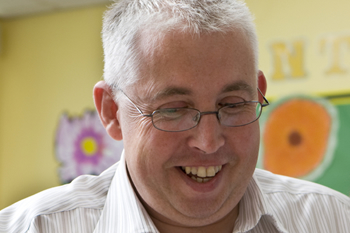 As students settle into the school year, one question teachers often ask is ‘how do you hold onto all of the energy and excitement that come with the start of a new year?’ One suggestion I offer is to nurture your own learning. For many, summer affords time to take courses, catch up on reading, and engage in some deep reflection. Teacher professional development can take many forms and there’s no question that competing demands during the school year limit some of the possible formats that are available. But what about thinking more purposefully about the many informal options available such as online learning communities, peer observations, and study groups?
As students settle into the school year, one question teachers often ask is ‘how do you hold onto all of the energy and excitement that come with the start of a new year?’ One suggestion I offer is to nurture your own learning. For many, summer affords time to take courses, catch up on reading, and engage in some deep reflection. Teacher professional development can take many forms and there’s no question that competing demands during the school year limit some of the possible formats that are available. But what about thinking more purposefully about the many informal options available such as online learning communities, peer observations, and study groups?
Matt Renwick in his blog post – I Believe in One Size Fits All PD – urges educators to not only “work more like a team,” but to recognize and apply best practices. Embedding formative assessment is one of those practices that research has shown to improve student learning. He references Dylan Wiliam’s research in this area. Keeping Learning on Track® (KLT®) is our teacher professional development program that Wiliam helped design to support teachers in learning about and implementing this practice and incorporates many of the elements of successful professional development that Matt mentions in his blog:
They [researchers including Wiliam] are all pretty much saying the same thing about what best practice looks like:
+ Formative assessment
+ Self-assessment
+ Feedback and Questioning
+ Integrated Units of Study
+ Direct Instruction (i.e. gradual release of responsibility)
+ Collaboration and Peer-to-Peer Conversations
+ Student Interest and Ownership of Learning Independent Practice
We can call these things whatever we want: Project-Based Learning, Inquiry Circles, Flipped Classrooms. It probably helps to give these practices snappy names so we can wrap our heads around them during the teaching process.
We just happen to call it KLT. With the implementation of the Common Core State Standards, we are in the midst of identifying best practices not just for teachers and their development, but for helping students in areas such as understanding complex texts. There is so much concern about the challenges that these standards present, that we often forget how significant and exciting it is that educators across the country can now work collaboratively to meet this challenge. Heidi Hayes Jacobs reminded us of this obvious fact in her webinar on Mapping to the Core, and proceeds to focus on all that is positive about this significant effort. She also underscores the critical role that students play in this…they are part of our team!
As you evaluate teacher professional development programs, I think it’s important to not only focus on those teacher best practices, but the fact that student involvement and collaboration are key elements that need to be included for successful transition to the Common Core.
What best practices do you feel are needed in teacher professional development? Drop a comment below and share your thoughts.